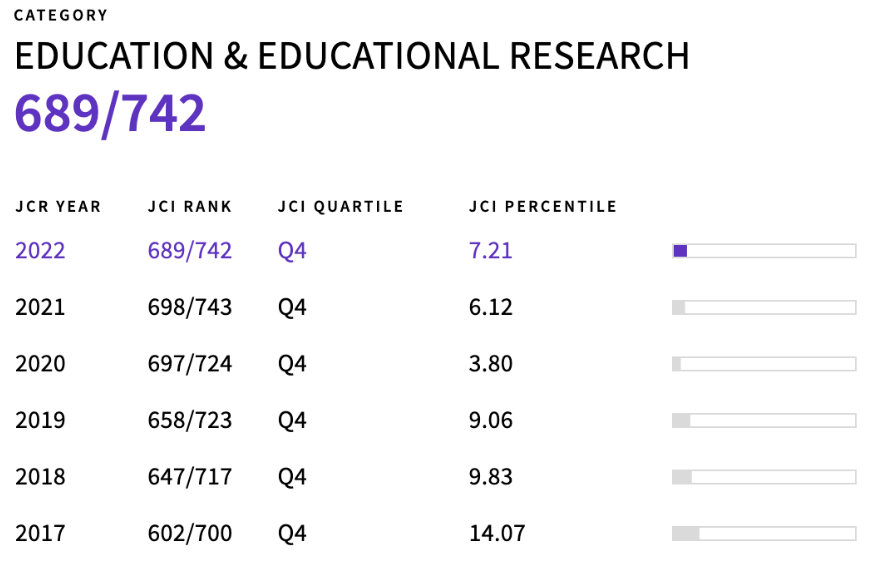ESTILOS DE APRENDIZAGEM DE KOLB E SUA IMPORTÂNCIA NA EDUCAÇÃO
DOI:
https://doi.org/10.55777/rea.v1i1.866Palavras-chave:
Estilos de aprendizagem, Kolb, EducaçãoResumo
Resumo: Estilos de aprendizagem relacionam-se à maneira pela qual as pessoas interagem com as condições de aprendizagem, abrangendo aspectos cognitivos, afetivos, físicos e ambientais que podem favorecer o processamento de informações. Esta pesquisa teve como principais objetivos: 1) verificar se há predominância de algum estilo de aprendizagem preferencial na aprendizagem, por área de conhecimento; 2) Identificar a relação entre os estilos de aprendizagem e as variáveis: gênero, idade, semestre, região e tipo de instituição. Os dados foram coletados utilizando-se o Inventário de Estilo de Aprendizagem de Kolb (1993) e os informantes constituíram-se de 2.552 estudantes universitários de vários estados das cinco regiões do Brasil, contemplando cursos das oito áreas do conhecimento. Na análise estatística dos dados, as diferenças significativas indicam que há predomínio do estilo de aprendizagem assimilador em todas as áreas do conhecimento, referindo-se a pessoas que aprendem basicamente por observação reflexiva e conceituação abstrata. Quanto à relação entre as variáveis observadas, verificou-se que os estilos de aprendizagem apresentaram diferenças, estatisticamente significantes, entre as faixas etárias, o agrupamento de semestres, a região e as áreas do conhecimento e não apresentaram diferenças relacionadas ao gênero e ao tipo de instituição. Pode-se concluir que o estilo assimilador, predominante nos universitários pesquisados, mantém-se estável em todos os semestres e áreas, havendo necessidade de outras pesquisas para a validação do instrumento, tendo em vista que já dispõe de validação de definição. Sugere-se a realização de novos estudos para ampliação do conhecimento sobre a temática.
Kolb’s Learning Styles and its Importance in Education
Abstract: Learning styles describe the way people interact with learning conditions as they include cognitive, affective, physical and environmental aspects which can support information processing. The most important aims of the present research was: 1) to verify if there is a predominant preferential learning style according to different fields of knowledge; 2) to identify the relationship between learning styles and the variables gender, age, grouped semester, regions of Brazil and type of institution . Data was collected through Kolb's Learning Style Inventory(1993). Informants were 2552 undergraduates of several states of Brazil's five regions, and from the eight classified fields of knowledge. Statistical analysis of data, for significant differences indicated that the assimilator learning style predominated in the six different fields of knowledge, referring to people who learn basically through reflexive observation and abstract conceptualization. As to the relationship between the observed variables, it was found that the learning styles show statistically relevant differences regarding age groups, grouped semesters, regions of Brazil and the fields of knowledge, but did not show any difference in relation to gender and type of institution. We conclude therefore that the assimilator learning style, predominant in this groups of undergraduates, maintains itself stable throughout the semesters and fields of knowledge. Validity of definition of the instrument was obtained, but further researches are needed to validate the instrument. We suggest new researches into the subject in order to broaden our knowledge on the subject.
Downloads
Downloads
Publicado
Como Citar
Edição
Secção
Licença
Ao submeter o original, o(s) autor(es) declara(m) ter conhecimento e aceitar, na íntegra, a política de privacidade, bem como os direitos de autor da Revista Estilos de Aprendizagem.
A Revista Estilos de Aprendizaje oferece acesso livre e gratuito ao seu conteúdo, a fim de levar a investigação científica aos seus leitores e à sociedade em geral. Todo o conteúdo digital é de acesso livre e gratuito e é publicado sob uma licença Creative Commons:

A cessão de direitos é feita sob a licença Creative Commons Reconocimiento-NoComercial-SinObraDerivada 4.0 Internacional (CC-BY-NC-ND 4.0)
The Learning Styles Magazine é uma revista de acesso aberto. A publicação de artigos ou resenhas na Revista não lhe dá direito a qualquer remuneração. Da mesma forma, tanto para os autores como para os leitores, a revista é gratuita Creative Commons Reconocimiento-NoComercial-SinObraDerivada 4.0 Internacional (CC-BY-NC-ND 4.0).
Com Esta licença permite a reprodução e divulgação do conteúdo da revista para transmissão educativa, social e de conhecimento, sem fins lucrativos e desde que não sejam modificados, citando a origem e a autoria. A licença concedida à Revista Estilos de Aprendizaje permite a cópia e distribuição do conteúdo da revista, desde que a autoria da obra seja reconhecida, especificando correctamente o autor e a entidade editora. A obra não pode ser utilizada para fins comerciais, nem pode ser alterada, transformada ou gerada a partir desta obra. A publicação de artigos ou resenhas na Revista não dá direito a qualquer remuneração.
A Revista Estilos de Aprendizagem convida o autor/autores a aumentar a visibilidade e o âmbito dos seus artigos publicados através da sua redifusão em:
- Espaços Web e redes pessoais, bem como em reuniões e fóruns científicos
- Arquivos institucionais abertos em Universidades, repositórios educacionais e Centros de Investigação
- Redes académicas e científicas (Researchgate, Academia.edu, Plubons, etc.)
Todos estes espaços e publicações devem incluir todos os dados bibliográficos da publicação.






















